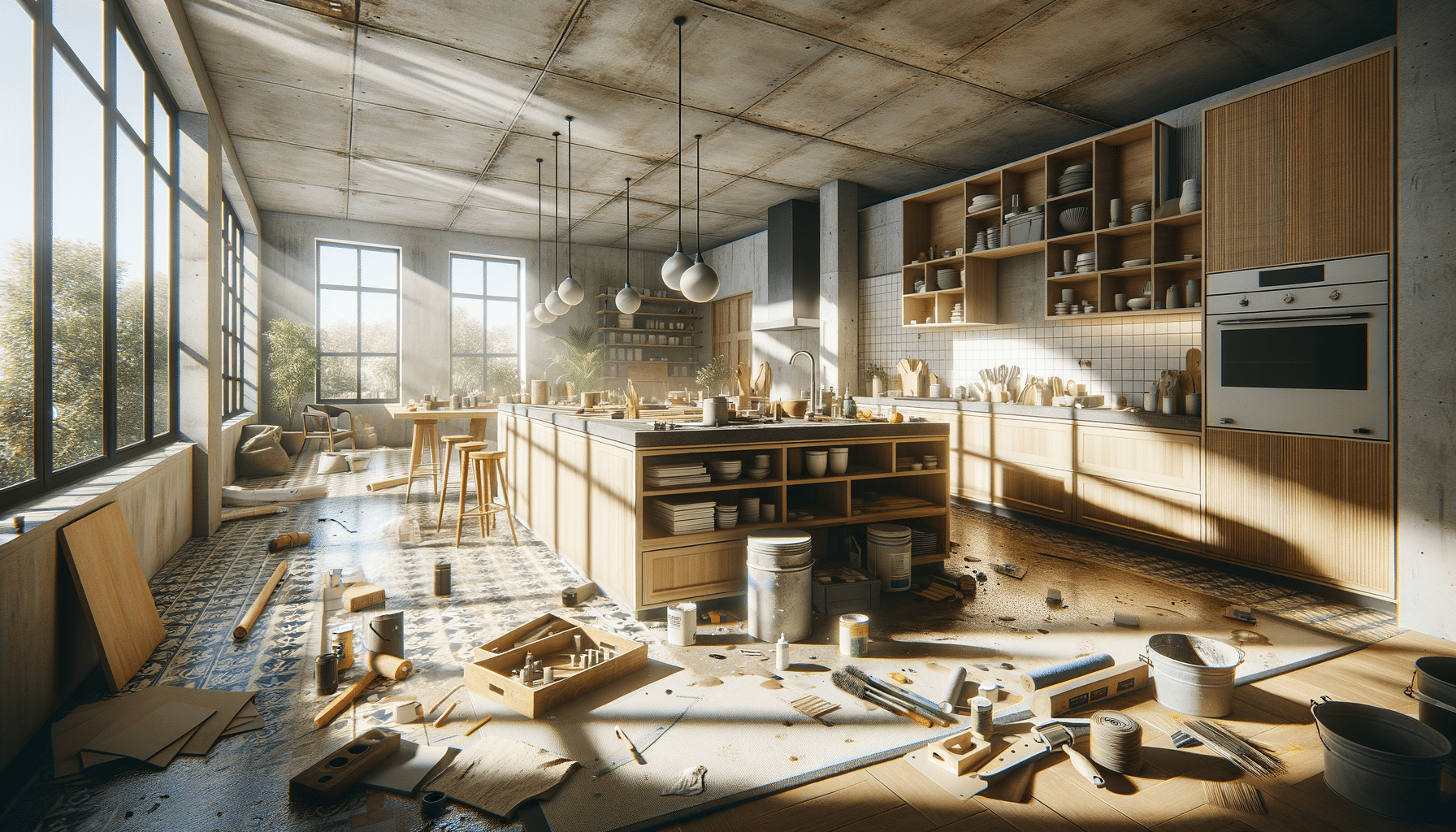
Transform Your Kitchen with These Renovation Ideas
Introduction to Kitchen Renovation
Kitchen renovation holds the potential to transform not just the aesthetic appeal of your home, but also its functionality and efficiency. As the heart of the home, the kitchen is where families gather, meals are shared, and memories are made. Updating this space can lead to a more enjoyable cooking experience, enhanced organization, and even increased property value. The importance of a well-thought-out kitchen renovation cannot be overstated, as it can breathe new life into your home and significantly improve your quality of living.
Planning Your Kitchen Layout
One of the most critical aspects of kitchen renovation is planning the layout. A well-designed kitchen layout ensures that the space is both functional and efficient, accommodating the needs of your household. There are several popular layouts to consider, including the U-shaped, L-shaped, and galley kitchens, each offering unique advantages.
When planning the layout, consider the work triangle concept, which focuses on the distance between the sink, stove, and refrigerator. This principle helps create an efficient flow, minimizing unnecessary movement. Additionally, think about the placement of cabinetry and appliances to maximize storage and accessibility.
Incorporating an island can also enhance the layout by providing additional counter space and seating options. Islands can serve multiple purposes, such as hosting informal dining, offering extra storage, or housing appliances like a second sink or cooktop. The key is to tailor the layout to your specific needs, ensuring that it complements your lifestyle and enhances the overall functionality of the space.
Choosing Materials and Finishes
The choice of materials and finishes plays a significant role in defining the style and durability of your kitchen. When selecting countertops, consider options like granite, quartz, or marble for their durability and aesthetic appeal. These materials not only withstand the rigors of daily use but also add a touch of elegance to the space.
For cabinetry, options range from solid wood to laminate, each offering different benefits. Solid wood provides a classic look and can be easily refinished, while laminate offers a cost-effective and low-maintenance alternative. When it comes to finishes, consider the color scheme and how it complements the rest of your home. Neutral tones can create a timeless look, while bold colors can add a modern edge.
Flooring is another crucial aspect, with choices like hardwood, tile, and vinyl. Each material has its strengths; for instance, hardwood offers warmth and longevity, while tile is highly durable and easy to clean. Ultimately, the materials and finishes you choose should reflect your personal style and meet your practical needs.
Incorporating Modern Appliances
Modern appliances can significantly enhance the functionality and efficiency of your kitchen. Today’s appliances offer advanced features that can make cooking and cleaning more convenient. For example, energy-efficient refrigerators and dishwashers can reduce utility bills and environmental impact.
Consider integrating smart technology into your kitchen renovation. Smart ovens, for instance, can be controlled remotely and offer pre-programmed settings for a variety of cooking methods. Induction cooktops provide precise temperature control and are safer for homes with children, as they remain cool to the touch.
When selecting appliances, it’s essential to consider their size and placement within the kitchen layout. Built-in appliances can create a seamless look and free up counter space, while freestanding units offer flexibility in positioning. The goal is to choose appliances that not only complement your kitchen’s design but also improve your culinary experience.
Lighting and Ambiance
Lighting is a crucial element in kitchen renovation, as it affects both the functionality and ambiance of the space. Proper lighting ensures that work areas are well-lit and tasks can be performed safely and efficiently. Layered lighting, which includes ambient, task, and accent lighting, is an effective strategy for achieving a balanced and versatile lighting scheme.
Ambient lighting serves as the primary light source, often provided by ceiling fixtures or recessed lights. Task lighting, such as under-cabinet lights, focuses on specific work areas like countertops and sinks, providing adequate illumination for cooking and food preparation. Accent lighting highlights architectural features or decorative elements, adding depth and interest to the space.
In addition to functionality, lighting can enhance the kitchen’s ambiance. Dimmable fixtures allow you to adjust the brightness to suit different occasions, creating a cozy atmosphere for dining or a bright environment for meal preparation. The choice of light fixtures and their placement can also contribute to the kitchen’s overall style, whether modern, traditional, or eclectic.
Conclusion: Bringing Your Kitchen Vision to Life
Embarking on a kitchen renovation journey is both exciting and rewarding. By carefully planning the layout, selecting quality materials, incorporating modern appliances, and optimizing lighting, you can create a space that is not only beautiful but also functional. A well-renovated kitchen can become the heart of your home, where you can enjoy cooking, entertaining, and spending time with loved ones. As you explore these renovation ideas, remember that the ultimate goal is to bring your unique vision to life, creating a kitchen that truly reflects your style and meets your needs.


